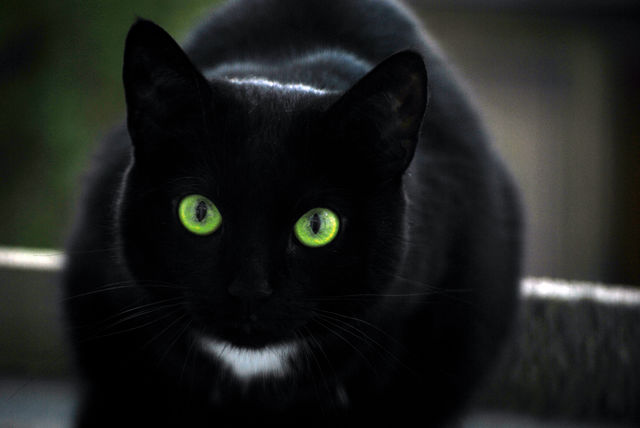
Circola su internet un meme con un papa Gregorio IX arcigno e un gatto nero e la dicitura secondo cui per colpa di una bolla papale – la Vox in Rama – l’Europa avrebbe veduto stragi indicibili di felini. Un articolo sul sito Quora, di Tim O’Neill, “Head Inquisitor against bad history”, mette i puntini sulle i in questa vexata quaestio.
Is the Vox in Rama authentic? What effects did it have?
Despite the strange claims by online Catholic apologists to the contrary, there is not the slightest doubt this bull existed. There is a manuscript of it in Basel – Universitätsbibliothek Basel Cod. B X 14, fol. Xv-XIIIv. It was first published in 1748 by Philippe Labbé in his Sanctorum conciliorum et decretorum collection nova. The text of the bull can also be found, along with other such documents from the time can also be in Joannes Dominicus Mansi, Sacrorum Conciliorum nova et amplissima Collectio novissima edition, Tomus vicesimus quintus (Venetiis 1782) pp. 324-25. Since this work is in public domain, you can find the full text here: Sacrorum conciliorum nova et amplissima collectio, cujus Johannes Dominicus Mansi et post ipsius mortem Florentius et Venetianus editores ab anno 1758 ad annum 1798 priores triginta unum tomos ediderunt, nunc autem continuatat et absoluta. And it’s mentioned and studied by many modern scholars including Lambert, Brunn, Hergemöller, Tremp and many others, none of whom express the slightest doubt about its authenticity.
So there certainly was a Papal bull called Vox in Rama that was issued by Pope Gregory IX sometime in the early 1230s. It addressed the supposed rise of a devil worshipping cult in the Rhineland and condemned this alleged sect. The existence of this sect is very uncertain, as it seems to depend solely on the notorious proto-inquisition of Conrad of Marburg, who was later accused of getting all kinds of dubious confessions from people via torture or threats of execution. Conrad’s overzealous and unreliable approach to heresy later led to him accusing a powerful local Count of heresy and he was not-so-mysteriously hacked to death by a group of knights not long afterwards.
It is often claimed that Vox in Rama condemned cats as animals associated with Satan and that this led to a wholesale massacre of cats, especially black cats. It’s often also claimed that this cat massacre increased the number of rats in Europe and so brought on the Black Death. Like most popular stories about the weird/crazy/stupid Middle Ages, this is all nonsense.
The Papal bull in question mentions a cat in its very strange description of the supposed rituals of the Satanic sect:
“The following rites of this [sect] are carried out: When any novice is to be received among them and enters the sect of the damned for the first time, the shape of a certain frog [or toad] appears to him.
Some kiss this creature on the hind quarters and some on the mouth, they receive the tongue and saliva of the beast inside their mouths. Sometimes it appears unduly large, and sometimes equivalent to a goose or a duck, and sometimes it even assumes the size of an oven. At length, when the novice has come forward, [he] is met by a man of wondrous pallor who has black eyes and is so emaciated [and] thin that since his flesh has been wasted, seems to have remaining only skin drawn over [his] bone. The novice kisses him and feels cold, [like] ice, and after the kiss the memory of the [C]atholic faith totally disappears from his heart.
Afterwards, they sit down to a meal and when they have arisen from it, the certain statue, which is usual in a sect of this kind, a black cat descends backwards, with its tail erect. First the novice, next the master, then each one of the order who are worthy and perfect, kiss the cat on its buttocks. Then each [returns] to his place and, speaking certain responses, they incline their heads toward to cat. “Forgive us!” says the master, and the one next to him repeats this, a third responding [says], “We know, master!” A fourth says: “And we must obey.”
Nowhere does the bull condemn cats generally or declare them Satanic animals, nor does it say they should be killed. There is no evidence that this bull, which was issued locally in the area of Mainz and probably unknown elsewhere, caused some general massacre of cats or any cat killing at all. And therefore the idea that the Black Death, which occurred a whole century later, was somehow caused by this non-existent cat massacre makes no sense. We also know that the Black Death ravaged central Asia and the Middle East as well as Europe, so why people well beyond the reach of the Catholic Church would also be killing cats is unexplained. The plague had nothing to do with any massacres of cats.
Despite there being no evidence to support any of these claims, they are repeated uncritically because they have found their way into a couple of badly researched books and because they appeal to people’s prejudices about the Middle Ages.
The only historically well-attested massacre of cats in in Europe that I am aware of happened in the 1730s in France. Coincidentally enough, it was called the Great Cat Massacre, and involved apprentice printers rounding up cats, putting them “on trial” for witchcraft, and killing quite a few of them.
This would seem to have been religiously motivated, but as Robert Darnton explains, the underlying causes were fairly complex.



